Utah’s World War I Monuments



War
was created by the Utah Division of State History, under the auspices of the Utah World War I Centennial Commission, and in partnership with the Utah Department of Veterans and Military Affairs.
The Utah World War I Centennial Commission strives to commemorate the many sacrifices made by Utahns a century ago in the war effort. The state legislature generously funded the commission with a one-time appropriation.


On November 1, 1918, in the thick of the Meuse-Argonne Offensive, Nels Anderson took a moment to record his experiences of the day’s fighting. He described a fellow soldier named Philips savoring a chocolate bar because it might be his last. “It was too. An hour or so after he was killed. The shells were coming over pretty fast and they caught us on an open slope,” Anderson wrote. “I mention Philips because we were intimate. He was homesteading in New Mexico, was engaged to a girl from there who was living with his mother in Kansas waiting his return. So perish our fondest hopes. Every boy that is cut down over here had been building castles in the air.”1 And indeed, in the conflict known as the Great War and then as World War I (WWI), some 70 million people were mobilized worldwide, with an estimated 37 million war casualties. Of the 4.3 million Americans who fought, 116,516 died. A great many more soldiers were among the wounded, imprisoned, or missing, and civilians throughout the world likewise faced death and suffering on a staggering scale.
How would the United States and Utah respond to a tragedy of this kind—to hundreds of thousands of “fondest hopes” destroyed? This essay, a project of the Utah World War I Centennial Commission, tells the story of how Utahns enshrined the service and loss of their loved ones in physical memorials. In the years spanning the close of the Great War in 1918 and the opening of the Second World War in 1941, Utahns spearheaded campaigns that resulted in statewide and local monuments honoring the men who contributed to the Allied cause. With the construction of memorials, women’s organizations, patriotic clubs, and civic groups etched their influence on World War I memory in their communities.
Americans of all sorts produced remembrances of and reactions to the war, from the war songs of Charles Ives to histories commissioned by state governments to the Victory Monument in Chicago that honored an African American unit. Although some national sites and events came to be— including the tomb of the Unknown Soldier and a national day of remembrance—it was at the local level that most of the memorializing occurred. Tens of thousands of WWI monuments, one scholar estimates, must exist in the United States. Yet Americans hardly spoke with a unified voice as they tried to make sense of the Great War during the 1920s and 1930s. Some advocated for heroic statues reminiscent of Civil War monuments while others pushed for “living,” functional memorials, such as bridges. Women often led the charge for commemoration, a trend that again harkened back to the aftermath of the Civil War and the authority women had gained as public mourners.2 In Utah, monuments tended to the heroic and women certainly led the charge.

Utah’s contribution to the war effort was significant: 24,000 Utahns were enlisted in the armed services, with 864 among the wounded and 665 who died. Soon after America’s involvement in WWI started in April 1917, Utahns began organizing to assist the veterans and families affected by the conflict. The Service Star Legion, the Daughters of Utah Pioneers, the American Legion, the Utah Copper Company, and others eventually produced memorials to veterans. Though varied in appearance and sponsorship, Utah monuments generally conveyed a message of pride and a desire to publicly remember the war dead.
Among the most influential commemorative organizations in Utah during the interwar years was the Service Star Legion. The group’s name referred to the flag that was often displayed in the homes of soldiers, and the legion was made up largely of women whose children had served in the war. The local forerunner of the legion was the War Mothers of Utah, which organized in July 1918 to provide comfort and recognition to soldiers and their families. Utah’s chapter joined the nationwide War Mothers of America in 1918. At their first national convention in Evansville, Indiana, that September, the group asserted that “they share with their warrior men the honors and victory” and “that war motherhood is a glorious crown.” With this language, the war mothers both became part of a long American tradition of extending womanhood to the public sphere through patriotic efforts and sanctified their own wartime hardships.3


The legion outlined a mission corresponding with the five points of the “service star”— relief, remembrance, sisterhood, education, and vigilance.4 The Utah Division focused largely on remembrance during the 1920s and 1930s. During this time, individual chapters constructed memorials throughout the state; perhaps the best known of them is Memory Grove Park in Salt Lake City.
The quest to build a grove honoring the veterans of the war began in 1920 when the Salt Lake County Chapter of the legion began discussing a local memorial. That spring, the chapter requested a portion of City Creek Canyon from Salt Lake City, began the work of cleaning it, and planted 300 trees as a “living” remembrance of their “soldier dead.” After a few years of planning, the Memory Grove Committee planted a grove of trees and erected a marker in 1924 listing the 665 Utahns killed in the war.5
Two of the most imposing structures on the green today were built years after the opening of Memory Grove. The Utah National Guard commissioned Gilbert V. Riswold, a sculptor noted for his work on the Mormon Battalion Monument, to engrave a bronze tribute to the dead of Utah’s 145th Field Artillery Regiment. The guard dedicated the monument on October 7, 1927, in a “simple yet impressive ceremony” in which regimental chaplain B. H. Roberts remarked that the bronze and granite statue signified “the response made by Utah to do its full duty in offering the services of its sons to its country.”6 The other monument to World War I veterans is the classical pagoda, which replaced the initial marker in 1932.7
On the eve of the Second World War—Veterans Day, November 11, 1939—three uniformed men salute onlookers against the backdrop of the marble pagoda in Memory Grove, Salt Lake City. Memory Grove was initially built to honor the sacrifices of veterans and their families during the Great War. Courtesy of Utah State Historical Society.


The legion and the Gold Star Mothers, a designation for women whose children died in the Great War, spearheaded the replacement of the original WWI memorial, although the reasons behind doing so remain unclear. What is known is that women led the effort, with Anne Payne Howard serving as the chair of the Memory Grove committee (see inset). The community dedicated the pagoda memorial on May 30, 1932.
Other chapters of the Utah Division of the Service Star Legion, including those in Mount Pleasant, Brigham City, and Springville, actively commemorated Utah’s doughboys. The Mount Pleasant Chapter, organized on October 27, 1920, financed the placement of one of four Spirit of the American Doughboy statues in Utah.8 This statue, created by the commercial sculptor and marketer E. M. Viquesney, was one of hundreds that made
its way into American communities during the interwar period. It depicts a young soldier standing erect and throwing a grenade amidst the stumps, mud, and barbed wire of the Western Front, thus conveying the heroic stance of Victorian statues and the muck of modern warfare.9 Under the leadership of Louise H. Cherry, Miriam T. Nielson, and Vern S. Winters, the Mount Pleasant Chapter raised the required $2,500 for the Doughboy and its granite base. Significantly, one of the reasons so many communities installed the Doughboy was its affordability, made possible through modern production techniques. The legion unveiled the monument in 1926, recognizing the three Gold Star Mothers in attendance; in 1939, in conjunction with the local American Legion Auxiliary, they added a bronze plaque with the names of all 118 Mount Pleasant men who served in the First World War.10
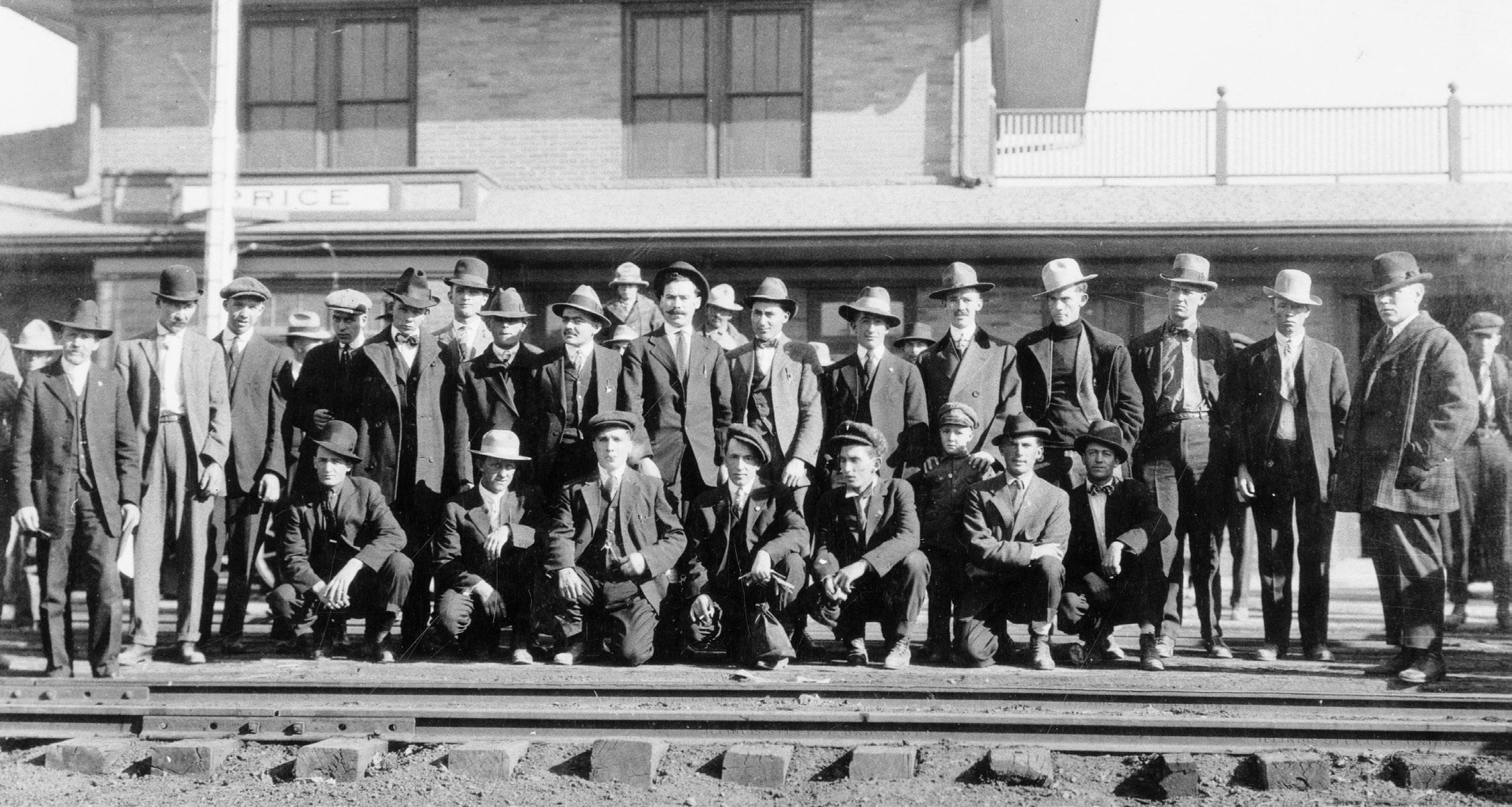
Another homage to the heroism of Utah’s World War I veterans appeared in Springville in the 1920s. The Service Star chapter in Springville was quick to memorialize its community’s deceased soldiers, beginning the process in 1920. The chapter’s monument committee, composed of Julia A. Packard, Drucilla Clark, and Viola Roylance, wanted a distinctive tribute, so they petitioned the famed Springville-born sculptor Cyrus E. Dallin to produce a statue representing the allegorical figure of Victory. Dallin accepted the request and offered his services free of charge, as long as the community paid for the materials. The legion raised the needed funds and installed the statue in the Springville city park on July 4, 1924. With sword raised and
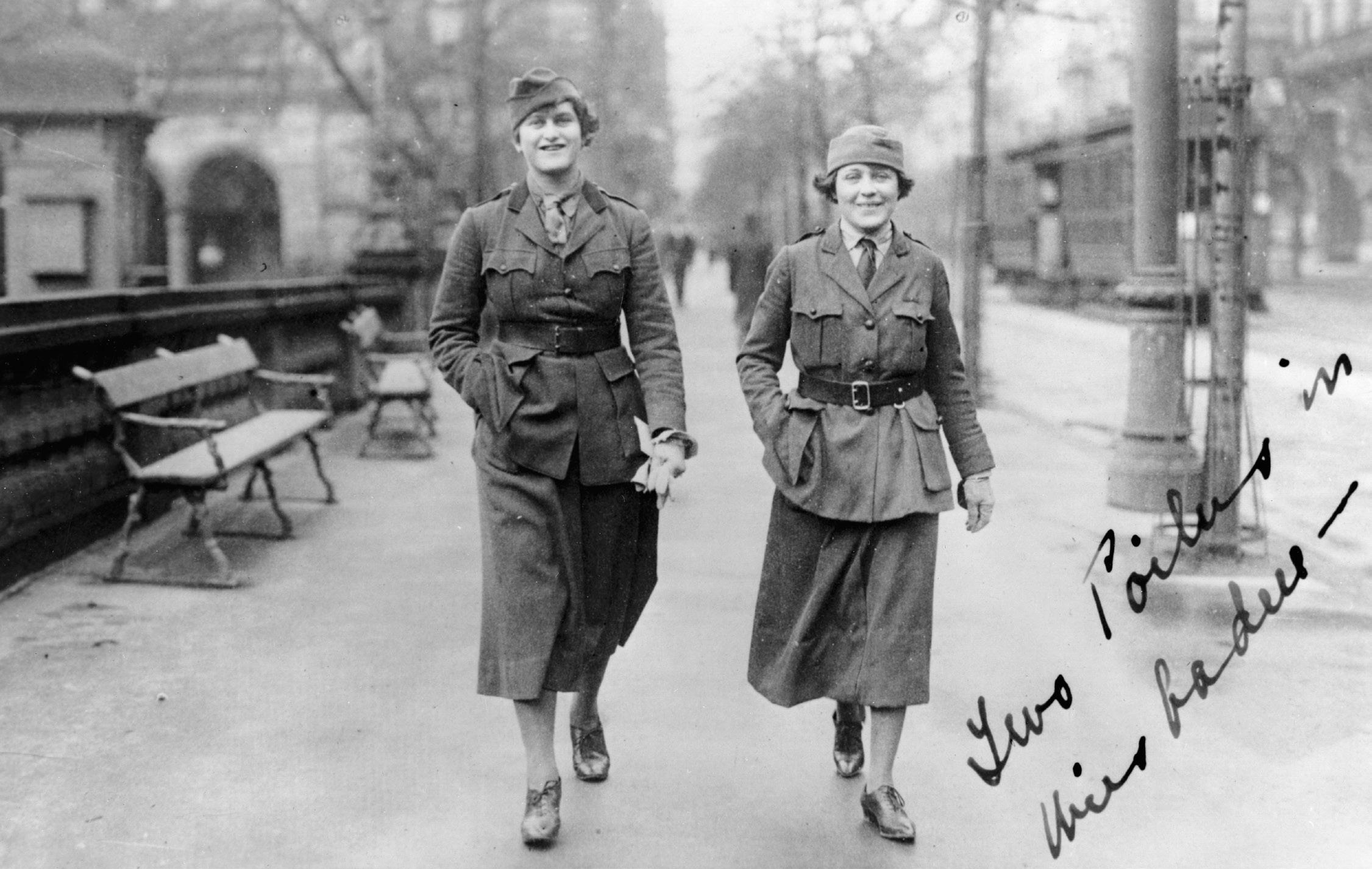
shield in hand, Victory stands atop a fountain inscribed with the names of the seven local men who died in the war, the monument as a whole representing the warrior’s conquest of death and the realization of the Service Star Legion’s charge to honor the war dead.11
Memorializing in Utah was not the sole province of the Service Star Legion, for other organizations also erected memorials throughout Utah. Oftentimes these monuments were created to commemorate not only the Great War but other wars and causes as well. For instance, the Camp Thurber unit of the Wayne County chapter of the Daughters of Utah Pioneers (DUP) in Bicknell, Utah, constructed its World War memorial in
conjunction with plaques honoring the local Mormon Relief Society and veterans of the Black Hawk War of the 1860s, as well as a list of the Camp Thurber DUP members from its creation in 1935 to the monument’s placement in 1939. Preserving the memories of veterans mattered to the Camp Thurber DUP, but they combined this signal moment with other events to commemorate the spirit of volunteerism.12
The American Legion, with its women’s auxiliary, also created WWI memorials. Two of Utah’s Spirit of the American Doughboy statues, those in Vernal and Beaver, were installed through efforts of the American Legion. Beaver’s Doughboy stands as one of the few interwar memorials installed primarily by the men of the legion.13 The American Legion’s women’s auxiliary, although separate from the Service Star Legion, worked to accomplish many of the same goals. Regardless of affiliation, women throughout the state were the primary drivers in memorializing the contributions of Utah’s World War I veterans during the interwar period, and their efforts in war remembrance remain an important part of Utah’s cultural landscape.
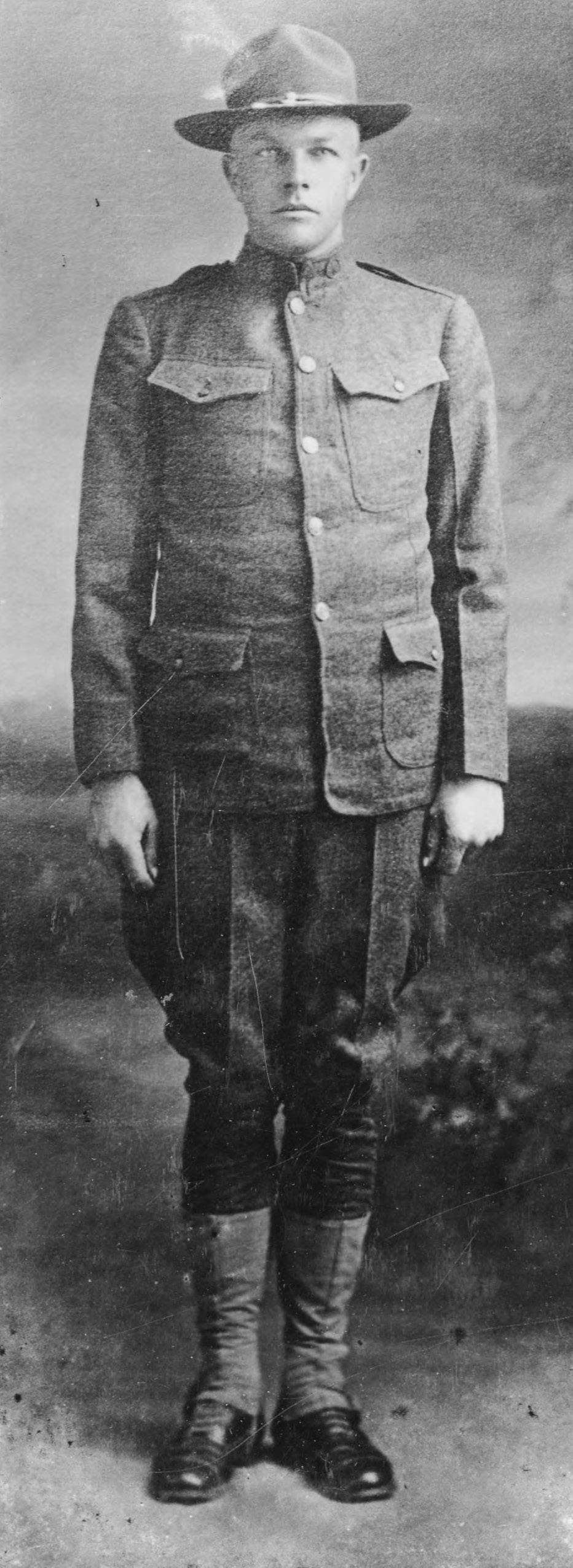
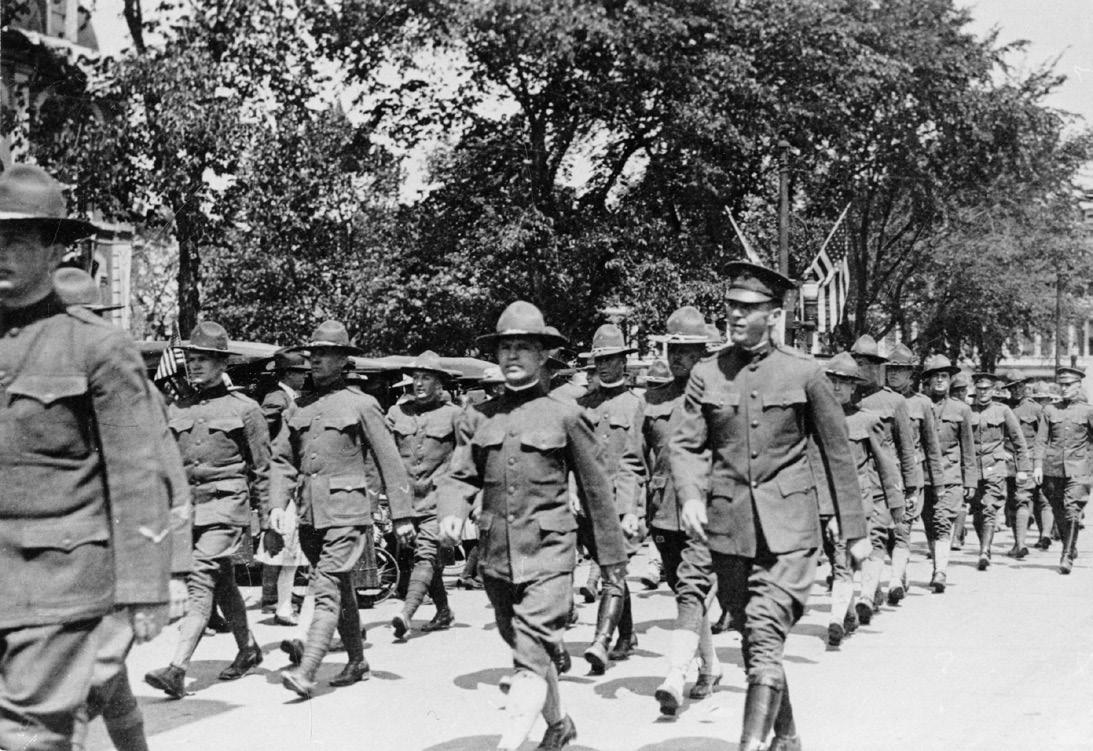
Today, war commemoration continues to be a part of communities throughout the state of Utah. Just as the women’s organizations of the interwar period enshrined their relatives’ contributions in the Great War, Utahns continue to erect monuments to those deceased in both recent wars and those long past. For instance, the town of Santa Clara in Washington County dedicated a long-awaited memorial to their veterans in May 2017. The meaning attached to such efforts is evidenced in the way community members reacted; one veteran in attendance reflected, “Our children need a place to come and remember the sacrifices that these veterans made.”14 The inclination to remember is perhaps the unifying element of the war monuments that dot Utah’s landscape. As in the interwar period, individuals and community groups today contribute the support and resources needed to sponsor memorials. Public commemoration may be the principal purpose behind these memorials, but the people behind their creation are also part of the story.15 Groups that commemorate veterans today leave their imprint on the state, whether they are cognizant of it or not. In looking at Utah’s war memorials, we see artifacts that allow us to remember the deceased, evaluate the past, and acquaint ourselves with the people who dedicated themselves to honoring the lives of others.
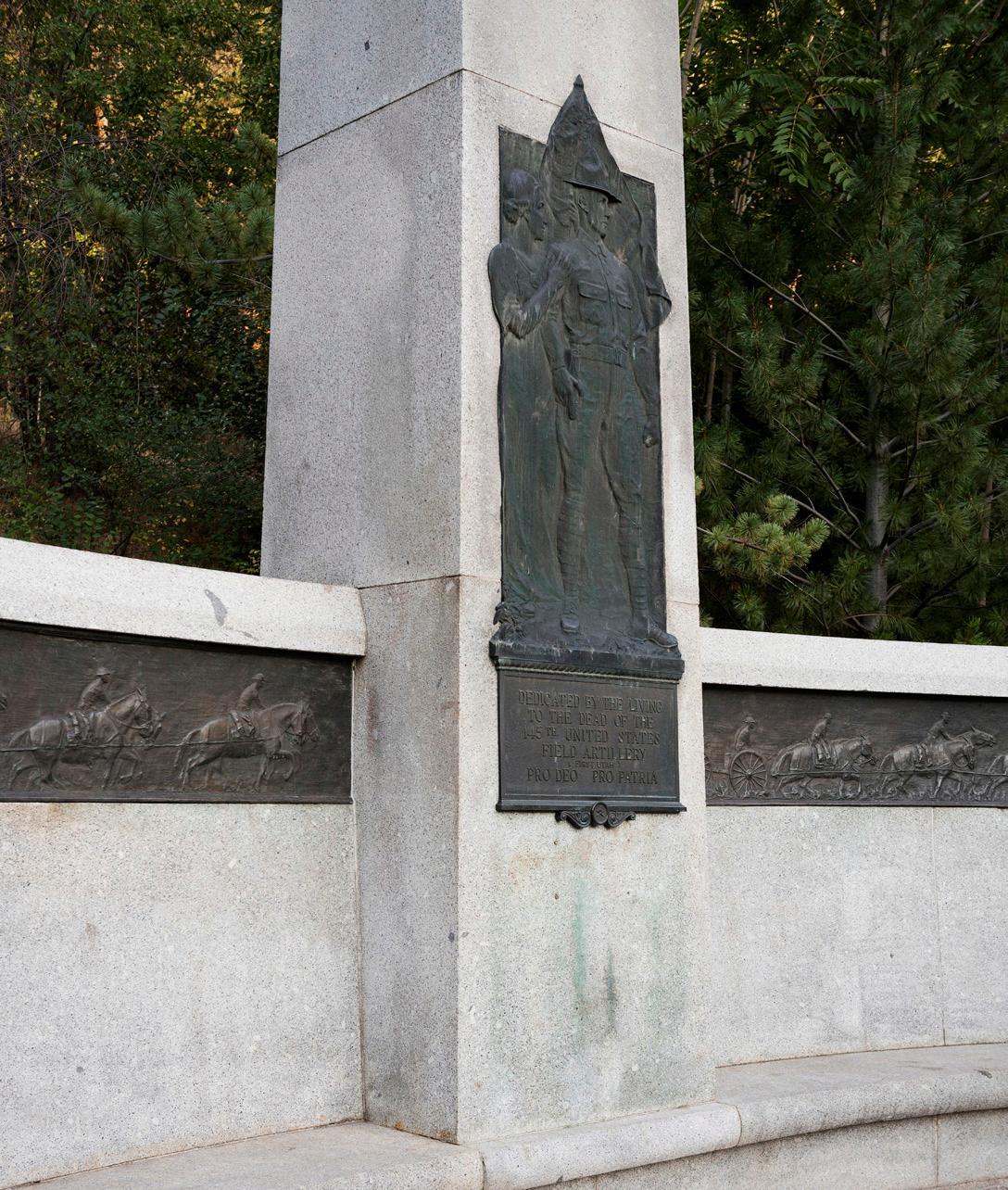
Dedicated on October 8, 1927, the 145th Field Artillery Monument was crafted by the noted sculptor Gilbert Riswold. Riswold came to Utah to sculpt the Mormon Battalion monument on Capitol Hill and was later commissioned to create this memorial to the Utah veterans of the 145th Field Artillery Regiment for $15,000.16 In the words of Noble Warrum, the 145th “was distinctively a Utah organization. It was the particular pride of the people of the state,” as its recruits came from “every valley, village, camp and city” throughout Utah.17 The granite and bronze memorial, one of the oldest currently on display in Memory Grove, depicts artillery soldiers marching to battle with a female personification of Victory guiding a heroic commander. An eagle spreads its wings atop the spire.


The World War I pagoda at Memory Grove, an eight-columned structure made of white Utah marble, contains the names of 760 Utah soldiers who died during and after the Great War. This 1932 memorial replaced the original 1924 plaque. Anne Payne Howard, a Gold Star Mother and the lifetime chair of Memory Grove Park, was instrumental in raising public and private funds for the monument. Concerning the pagoda, she said, “We are anxious to have something that we know will be permanent—something worth our efforts that will be here long after we are gone.”18
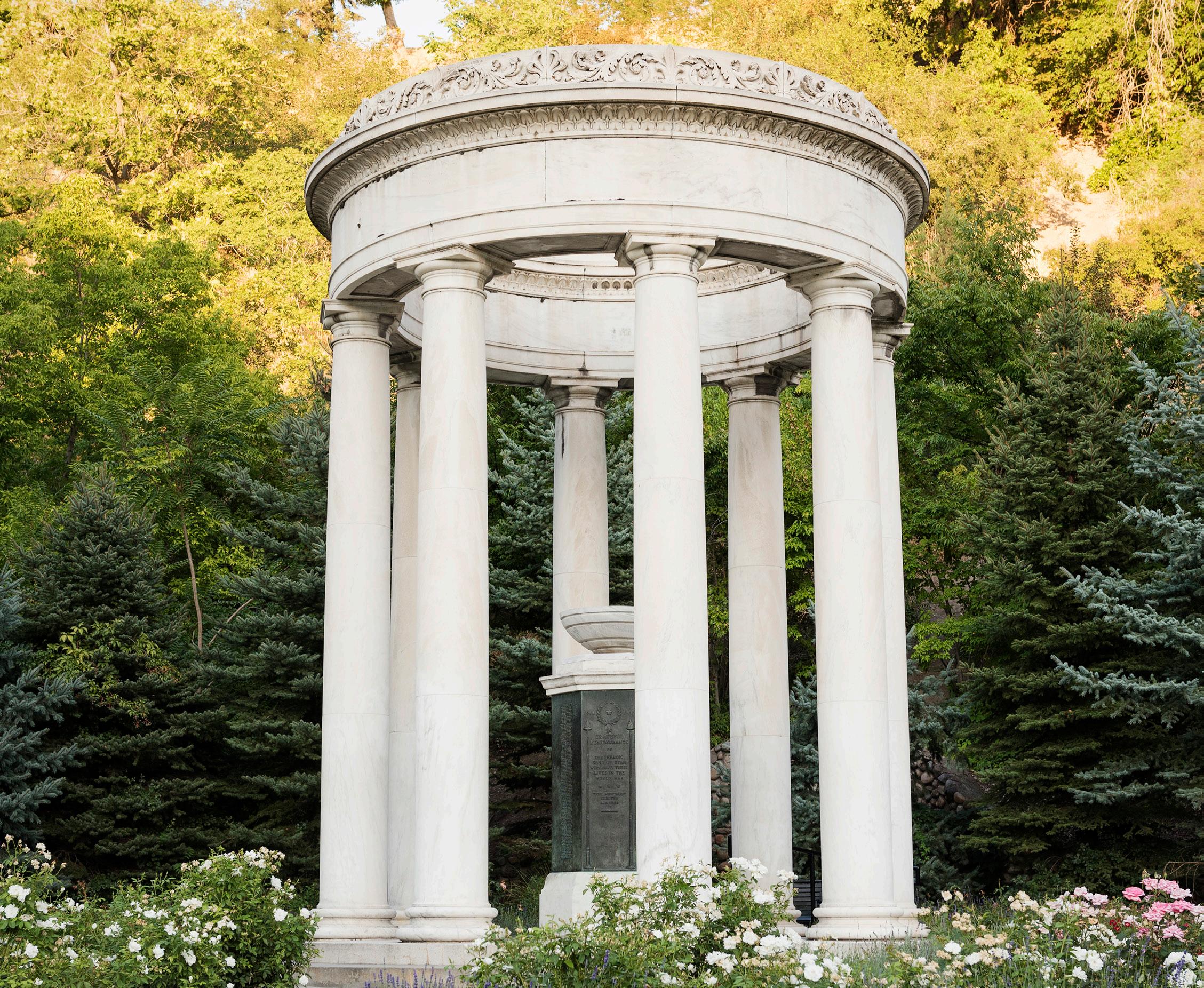
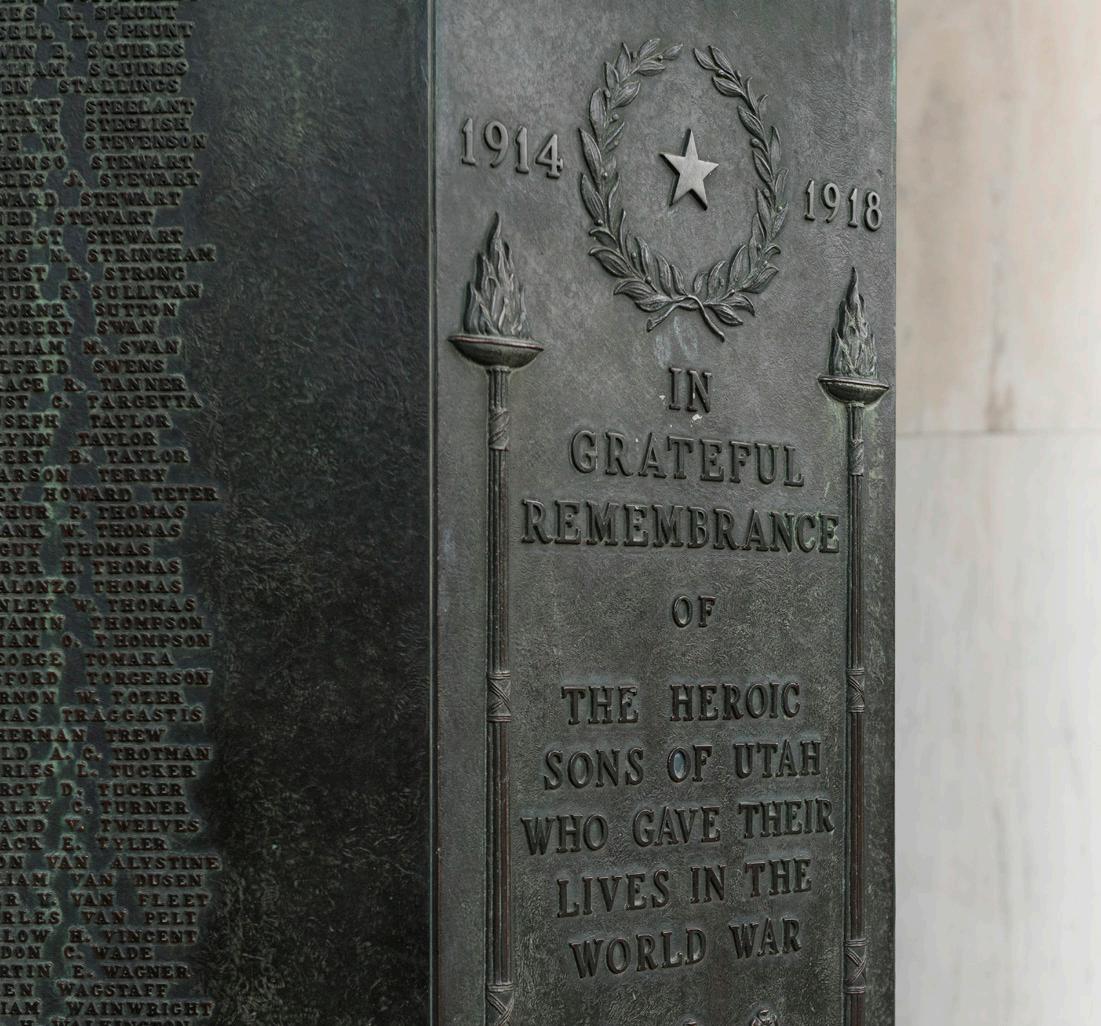
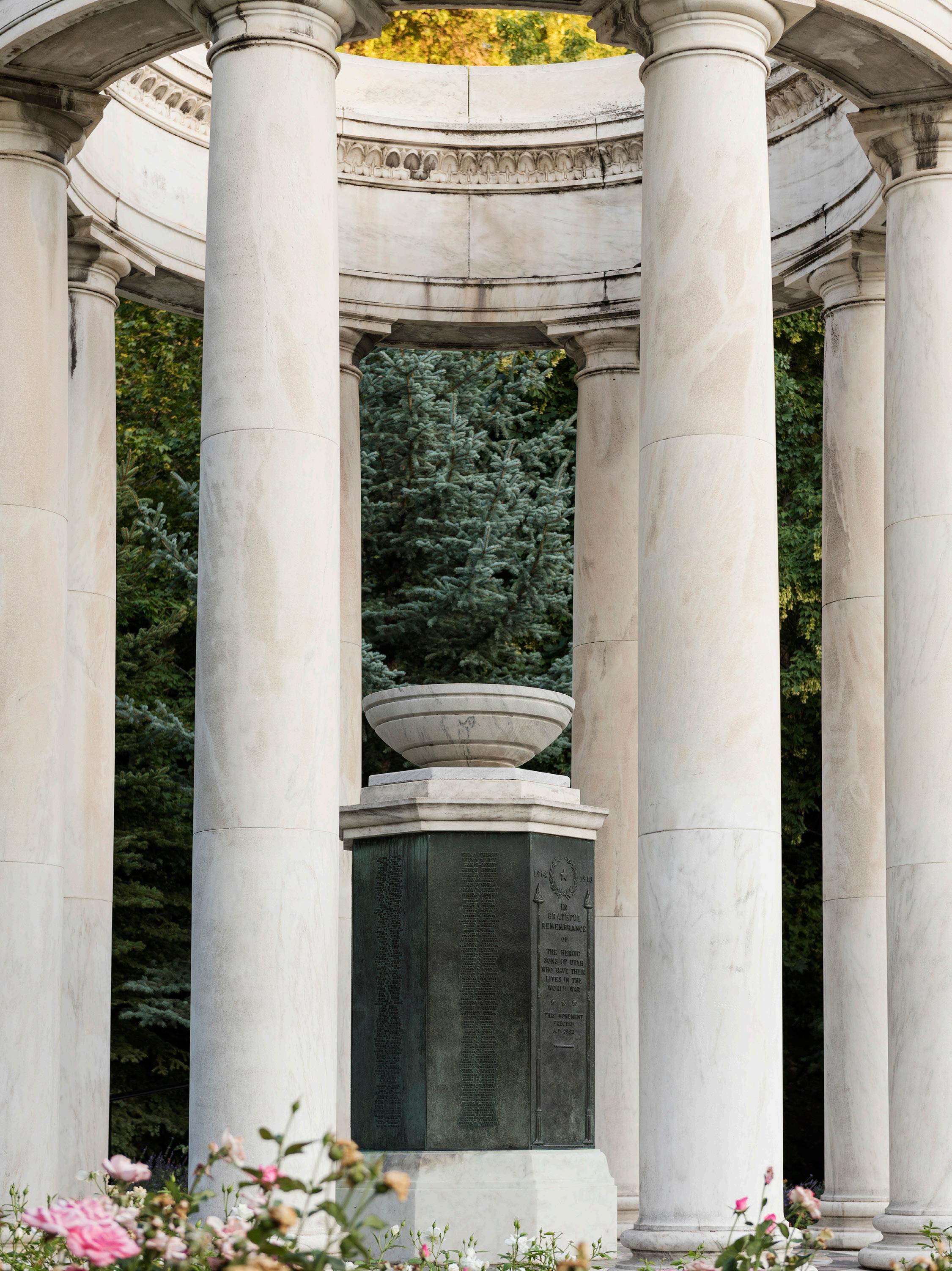
Tucked away in the northwest corner of Memory Grove lies a tribute—Gold Star Hill—to many of the women who played an integral role in the creation and upkeep of the park. The gold star designation referred to families who had lost one of their own in the war. A tablet tells the story: “dedicated in 1934 by the Utah Chapter of the American Gold Star Mothers. Formed in 1928 by a component of the Service Star Legion and originally composed of women whose sons had been lost in World War I, the Gold Star Mothers would later expand their membership to include those whose sons were lost in World War II, Korea, Vietnam and Desert Storm.”

On the morning of October 8, 1918— one month before the end of World War I—Captain James B. Austin led his fellow soldiers in a charge in France’s Argonne forest. About an hour into the fighting, two machine gun bullets hit Austin. The action was so intense that the wounded man could not be evacuated until nightfall, when he died.19 Meanwhile, Austin’s wife and two young children in Omaha, Nebraska, as well as his mother and stepfather in Salt Lake City, celebrated the end of the war “with no intimation that their dear one had even been injured.”20
When word of Austin’s death reached the United States, it was covered by newspapers in Utah and the West, with multiple accounts noting the officer’s decency: he would buy
cigarettes and candy for the fellows in his unit and turned down promotions in order to stay on the front lines.21 His death was both tragic and tragically common: 29,277 Americans—James Austin among them—died in the Meuse-Argonne Offensive, a campaign in northeastern France that lasted from September 26, 1918, to the war’s conclusion on November 11.22 Another 95,786 doughboys were wounded in the campaign. As Goodwin’s Weekly wrote, “it comes home to us, but it is only what has happened to loved ones from millions of homes since the terrible conflict began.”23
This “inexpressibly shocking” news surely devastated Austin’s family—not least his mother, Anne Payne Howard, known publicly as Mrs. E. O. Howard.24 In Salt Lake City,
Howard and her husband, the banker Edward O. Howard, enjoyed comfort and prominence: they lived in a large South Temple home, and James’s father-in-law was the president of the Union Pacific railroad.25 Social class could not remove the pain of losing a child, however. Consider the explanation for travel written in Anne Howard’s 1920 passport: “visit the grave of my son who was killed in Argonne.”26
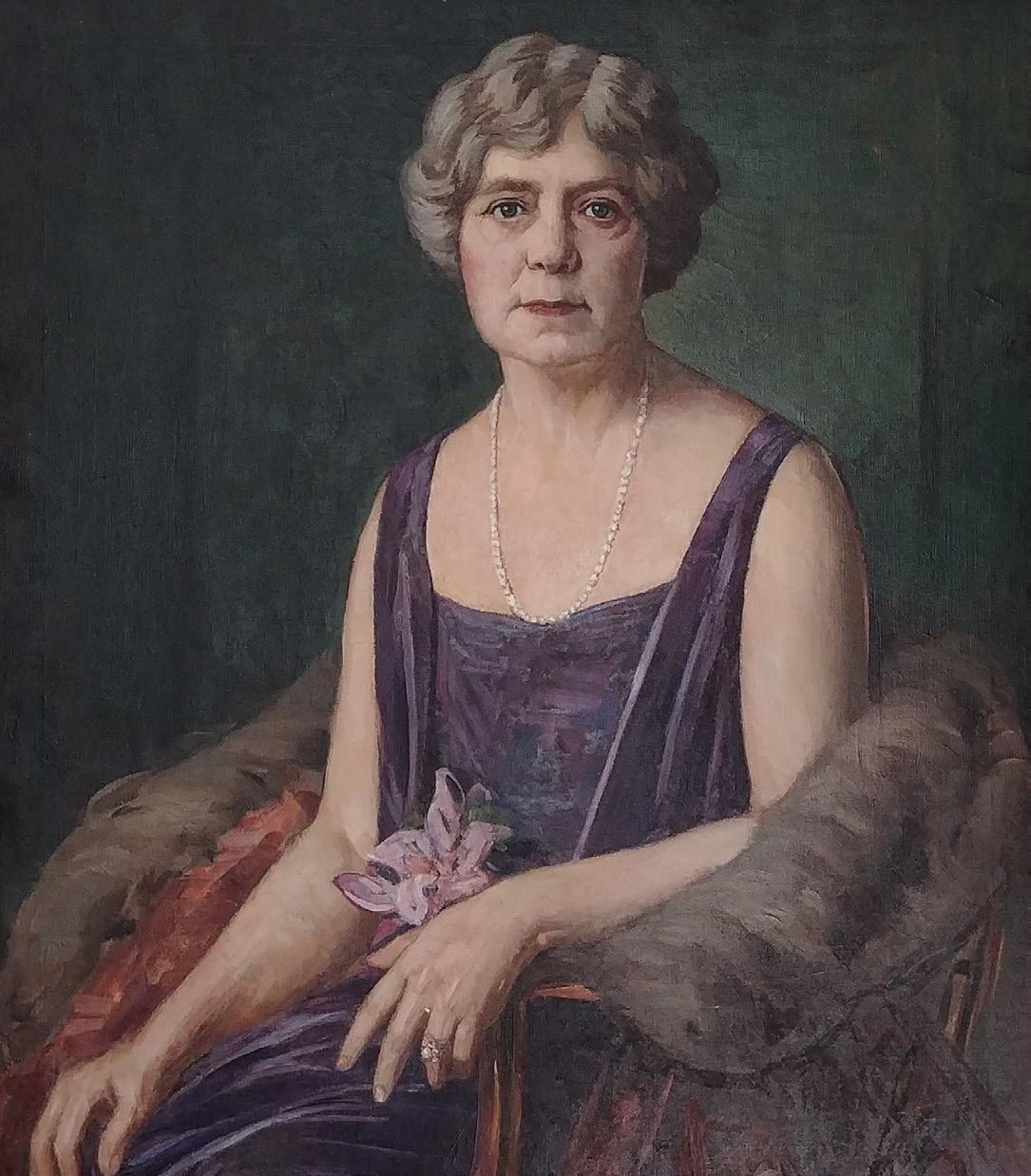
Still, her pilgrimage eventually led to good things for the state of Utah.27 In 1920, when the Salt Lake Chapter of the Service Star Legion was beginning its efforts to create a memorial in City Creek Canyon, one of its leaders learned of Howard’s recent tour of European war cemeteries and invited her to speak to the women of the legion. The chapter’s history recounts that Howard “graphically and tenderly told of her experiences while visiting these sacred
spots.” Soon thereafter, she joined the legion and became treasurer of Memory Grove Committee.28
Evidently, Howard quickly became “most devoted” to the cause of dedicating the park to the memory of Utah’s soldiers. During the 1925 session of the state legislature, for instance, Howard, legion members, and several Gold Star Mothers successfully pleaded for $10,000 for the grove before a joint appropriations committee. It is reasonable to assume that Howard’s social status facilitated her advocacy. Whatever the case, the other women of the legion lauded her accomplishments, writing that “To Mrs. E. O. Howard, under whose marvelous supervision this meta morphosis” of the canyon had occurred, “the people of the commonwealth owe a lasting obligation. No words are adequate to express the deserved tribute.”29

E. M. Viquesney’s Spirit of the American Doughboy was a mass-produced statue meant to represent the unpretentious valor of the American soldier; it can still be found in hundreds of communities throughout the United States. Viquesney also marketed the Doughboy to families in the form of a statuette.30 Mount Pleasant’s chapter of the Service Star Legion organized the erection of this rendition of the statue in 1926.
Cyrus Dallin, a Springville native, sculpted this embodiment of the allegorical figure of Victory in 1924 at the request of the Springville Chapter of the Service Star Legion. Dallin— renowned for his statues Appeal to the Great Spirit, Angel Moroni, and Paul Revere—created this work free of charge. Surrounding the fountain are the names of men from Springville and Mapleton killed in the Great War: Chas. A. Bacon, Golden Hatfield, Ira Houtz, Frank S. Fuller, Leroy Jensen, Hyrum A. Perry, and Vernie L. Scott.31 The posture of the statue atop the fountain symbolizes victory over death and victory of the nation, built on the foundation of soldiers who died for the cause.
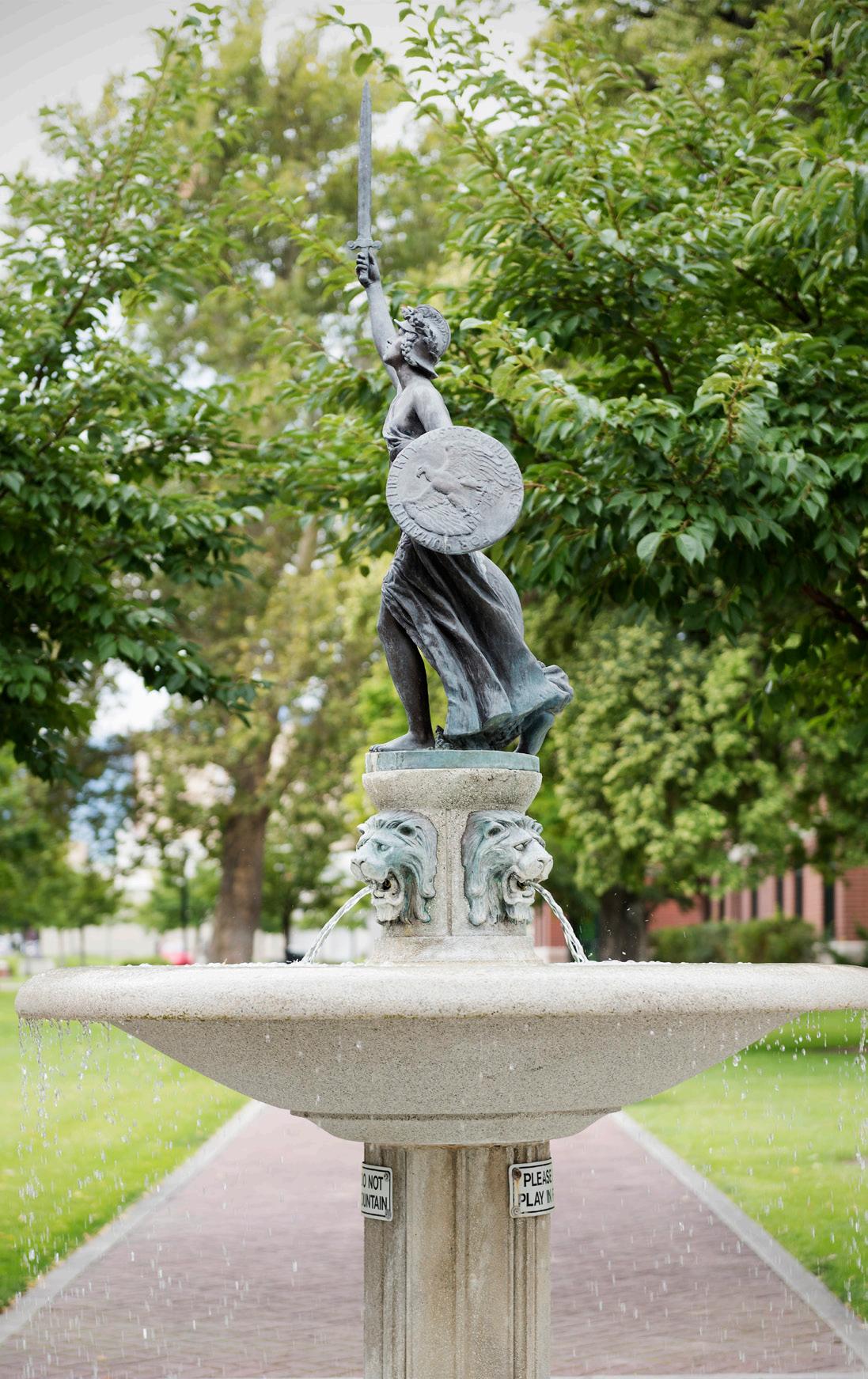



The Camp Thurber Chapter of the Daughters of Utah Pioneers placed this multipurpose monument in 1930s. The World War I memorial stands alongside plaques honoring the veterans of the Black Hawk War, interpretative information for the nearby Relief Society Hall, and the names of the members of Camp Thurber at the time. Built of Wayne County rock, the monument is nine feet high with a base of seven-by-five feet. John Khyl and Joseph Andersen, local men, dressed and laid the twenty tons of rock used to construct the memorial.32
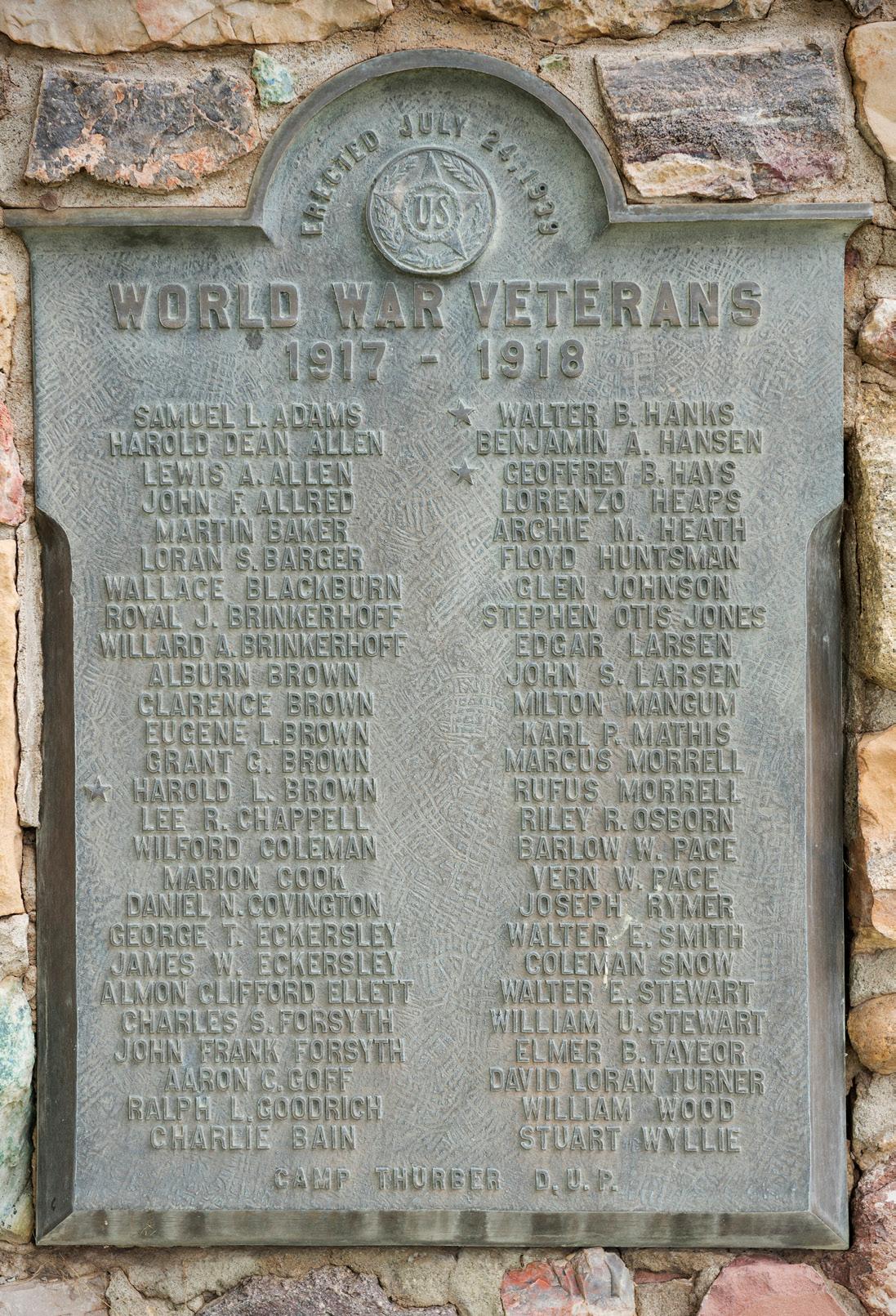
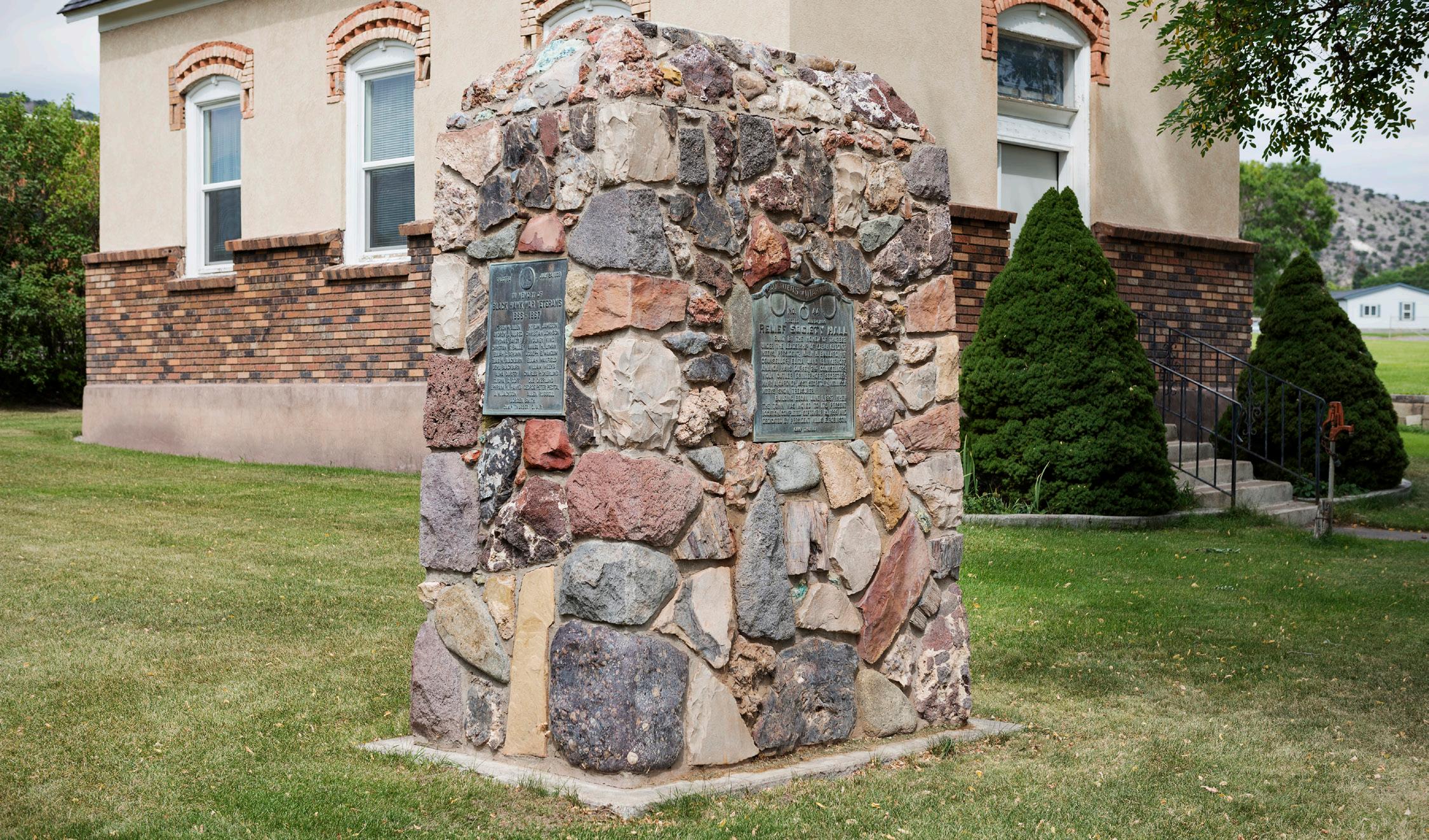
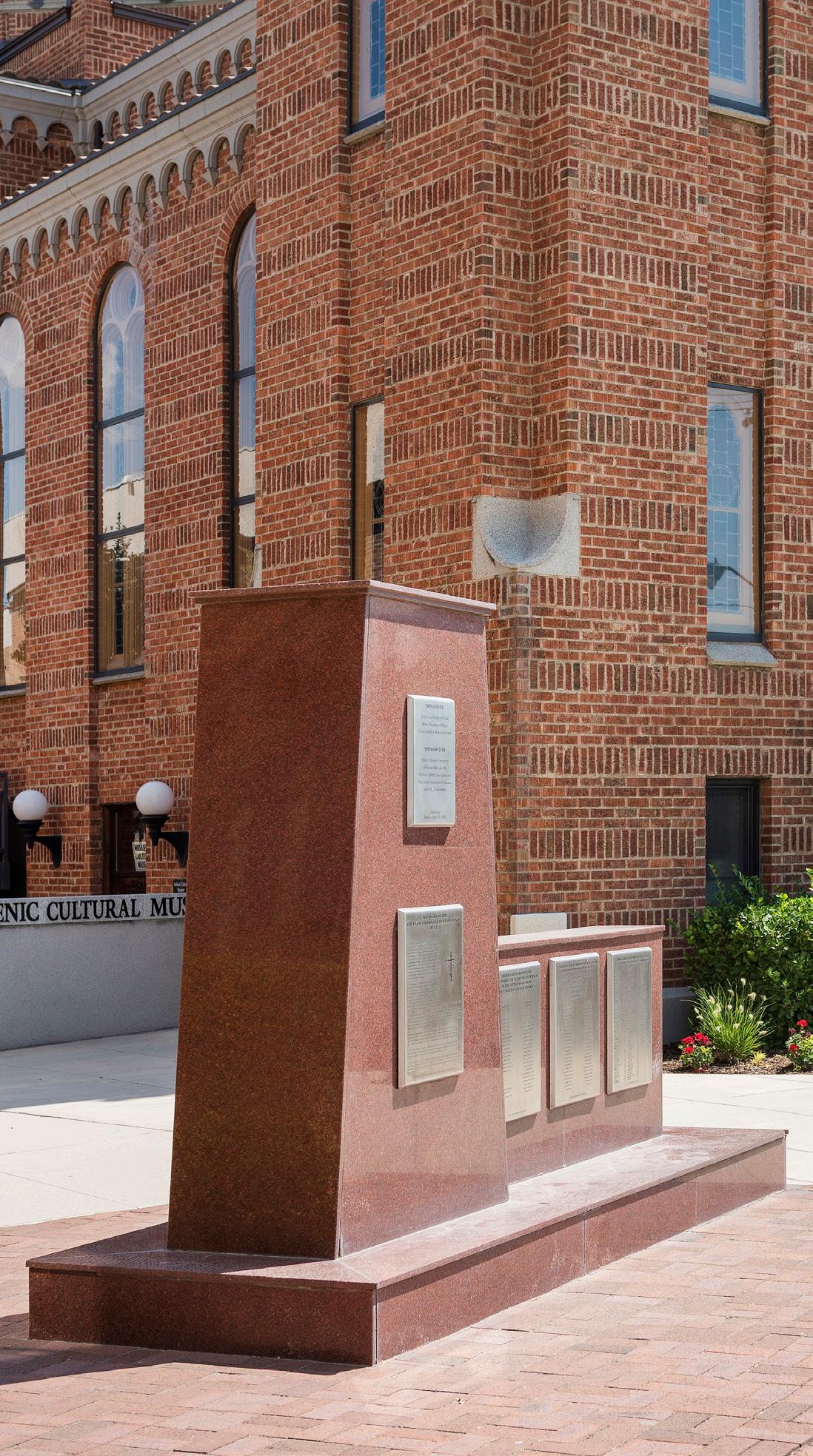
The Greek Veterans Memorial is located on the grounds of the Greek Orthodox Holy Trinity Cathedral on the northeast corner of 300 West and 300 South in downtown Salt Lake City. Placed on April 24, 1988, by the Four Cretan Chapters of Utah, the memorial lists the names of Greek Utahns who died in World War I, World War II, and the Korean Conflict. Greeks who served the United States hailed from many parts of Utah, including Tooele, Magna, and Carbon County.
One veteran, Theodore Efstathios Gourgiotis (listed as Theodore E. Gouras on the monument), is found on Tooele County’s Council of Defense Honor Roll. Gourgiotis entered the service on June 25, 1918, when he was twenty-four years old. A naturalized U.S. citizen, Gourgiotis was born in Thessalia, Greece, in 1893, the child of Efstathios and Hellen Gourgiotis. In Utah, the young man was a produce salesman by trade who lived in Garfield, a small mining town west of Magna. Gourgiotes was killed during the MeuseArgonne Offensive in October 1918, two months after being transported overseas. He is buried in the Meuse-Argonne American Cemetery in Romagne, France.33


The Davis County Veterans Memorial is housed in the Davis County Memorial Courthouse in Farmington, Utah. The addition, constructed in 1931–1932 as an expansion to the previous courthouse, contained space for the county’s veterans.34
Part of this new courthouse was a stainedglass tribute to local veterans. The original work memorialized (in its language) the Civil War, the Black Hawk Indian Troubles, the Spanish American War and Philippine Insurrection, and the World War. The stained glass depicts a victorious angel heralding the efforts of a sailor and soldier, who hold the flag of the United States over the world. It contains the inscription, “They who sacrifice most live longest in the hearts of the people.”



German Americans, together with the American Legion of the State of Utah, erected the German War Memorial at the Fort Douglas cemetery in memory of men who died while interned at Fort Douglas during World War I. Arno A. Steinicke designed and constructed the monument, which was dedicated on May 30, 1933.
With the American declaration of war on Germany, the U.S. faced many difficult problems, including the treatment of persons considered to be enemy aliens. During WWI, men born in Germany (and later AustriaHungary) and not naturalized received this designation. When such people violated—or were suspected of violating—restrictions on their freedom of speech and mobility, they faced arrest, internment, and removal.35

Fort Douglas was the third WWI internment camp instituted in the U.S. for the sake of holding German prisoners of war (POWs) captured from naval vessels. However, as U.S. involvement in the Great War continued, paranoia about German spy plots increased. This occurred alongside a rise in arrests of enemy aliens for suspected subversion. As a result, the use of Fort Douglas changed to include both naval prisoners of war and enemy aliens.36 This change has particular significance for the German War Memorial: of the twenty-one names listed on memorial, only one (Stanilaus Lewitski) was a naval POW. The rest were enemy aliens.
Life at Fort Douglas differed for POWs and enemy aliens, with the latter group receiving worse treatment. The enemy aliens were civilian noncombatants, many of them immigrants who had become trapped behind U.S. lines with the declaration of war and were arrested and interned with little to no recourse. Internment meant the loss of jobs, social isolation, and stigmatization. It could also mean death. Most of the men listed on this monument died of illness related to the global influenza epidemic that killed forty million people during WWI and its aftermath.37

1 Allan Kent Powell, ed., Nels Anderson’s World War I Diary (Salt Lake City: University of Utah Press, 2013), 135. Anderson, who had strong Utah connections, would go on to become a leading sociologist.
2 Steven Trout, On the Battlefield of Memory: The First World War and American Remembrance, 1919–1941 (Tuscaloosa: University of Alabama Press, 2010), 1–40, 170; Lisa M. Budreau, Bodies of War: World War I and the Politics of Commemoration in America, 1919–1933 (New York: NYU Press, 2009), 2–3, 86–88; Drew Gilpin Faust, This Republic of Suffering: Death and the American Civil War (New York: Vintage Books, 2008). Note that at the centennial of America’s involvement in WWI, no monument to all American veterans of the conflict stands on the National Mall, although efforts have been made to remedy that void. Peggy McGlone, “World War I Centennial Commission Picks Final Design for Memorial,” Washington Post, January 26, 2016, accessed August 2, 2017, washingtonpost.com.
3 Box 3, fd. 1, Service Star Legion Records, 1905–1985, Ms 222, Special Collections and Archives, J. Willard
Marriott Library, University of Utah, Salt Lake City, Utah. See also “Mothers of Utah Soldiers to Organize Plan for General Good of Fighting Men,” June 23, 1918, and “600 War Mothers Discuss Organization,” July 6, 1918, Salt Lake Herald; “Thomas Named to Preside at War Mother Meeting,” Salt Lake Telegram, July 3, 1918; “War Mothers’ Day Has Observance,” Salt Lake Tribune, July 6, 1918. The creation of the war mothers group was part of the long trend of women’s organizing in Utah and the United States. See Jill Mulvay Derr, “Scholarship, Service, and Sisterhood: Women’s Clubs and Associations, 1877–1977,” in Women in Utah History: Paradigm or Paradox?, eds. Patricia Lyn Scott and Linda Thatcher (Logan, Utah: Utah State University Press, 2005), 266–73.
4 Box 3, vol. 7, Service Star Legion Records.
5 “Memory Park 1920–1932,” Service Star Legion Records; William G. Love, “A History of Memory Grove,” in Utah and the Great War: The Beehive State and the World War I Experience, ed. Allan Kent Powell (Salt Lake City: University of Utah Press, 2016), 397–98; Derr, “Scholarship, Service, and Sisterhood,” 270.
6 “145th Artillery Society Unveils Statue to Dead,” Deseret News, October 8, 1927.
7 “Memorial Unveiled by Gold Star Mothers,” Salt Lake Tribune, May 31, 1932.
8 According to the online E. M. Viquesney Doughboy Database, Utah’s four renditions of the Doughboy are currently placed in Beaver, Mt. Pleasant, Price, and Vernal. The Price statue was originally erected in Hiawatha and moved to the city of Price in 1989. It was rededicated in November 1990. Doughboysearcher.weebly.com, accessed September 25, 2017.
9 Trout, Battlefield of Memory, 109–129.
10 Hilda Madsen Longsdorf, comp., Mount Pleasant 1859–1939 (Salt Lake City: Stevens and Wallis, 1939), 245.
11 Mary J. Chase Finley, A History of Springville (Springville, UT: Art City, 1939), 92–93.
12 Anne Snow, comp., Rainbow Views: A History of Wayne County, 4th ed. (Springville, UT: Art City, 1985 [1953]), 168–72.
13 Daughters of Utah Pioneers, Monuments to Courage: A History of Beaver County, 2nd ed. (Beaver, UT: Beaver Printing), 190–94.
14 Hollie Reina, “Veteran’s Monument Dedication Marks an ‘Exciting’ Day for Santa Clara,” St. George News, May 26, 2017.
15 Derr, “Scholarship, Service, and Sisterhood,” 270–71. For instance, many of the postwar organizations, including the Service Star Legion and the American Legion Auxiliary, supported patriotic education in the community and pushed back against communism in the 1920s. Box 13, fd. 3, Service Star Legion Records.
16 Gilbert Riswold Mormon Battalion Monument Papers, 1917–1958, box 1, fd. 10, Mss B 1944, Utah State Historical Society, Salt Lake City, Utah (hereafter USHS).
17 Noble Warrum, Utah in the World War: The Men behind the Guns and the Men and Women behind the Men behind the Guns (Salt Lake City: Arrow, 1924), 56.
18 Box 2, Service Star Legion Records.
19 “Sergeant Tells How Austin Died,” Salt Lake Tribune, October 5, 1919.
20 “Death of Jimmie Austin,” Goodwin’s Weekly, November 30, 1918.
21 “Captain J. B. Austin Killed in France,” Ogden (UT) Standard, November 21, 1918; “Captain J. B. Austin Is Killed in Action,” November 21, 1918, and “Sergeant Tells How Austin Died,” October 5, 1919, Salt Lake Tribune; “Captain Austin, Former Oakland Boy, Killed as Big War Halts,”
Oakland California Post, December 26, 1918.
22 Brandon Johnson, “‘A Perfect Hell’: Utah Doughboys in the Meuse-Argonne Offensive, 1918,” in Utah and the Great War, 50.
23 “Death of Jimmie Austin.”
24 Ibid. Anne Howard was born in Kentucky as Anne Payne; James Austin was her child by a first marriage to James Austin, Sr.
25 James B. Austin was married to Erminie Calvin, the daughter of Edgar E. Calvin, president of the Union Pacific in the late 1910s. “Captain J. B. Austin Killed in France,” Ogden (UT) Standard, November 21, 1918; also Utah, Death and Military Death Certificates, 1904–1961, s.v. Annie Payne Howard, digital image, accessed September 15, 2017, ancestry.com.
26 U.S. Passport Applications, 1795–1925, s.v. Annie Payne Austin Howard, digital image, accessed September 15, 2017, ancestry.com.
27 Notably, many families did not have the privilege of visiting their children’s overseas graves, at least until the Gold Star pilgrimages of the 1930s. In this way, Howard’s financial situation could give her a measure of comfort, however limited.
28 “Memory Park 1920–1932,” p. 2, Service Star Legion Records.
29 Ibid., 5.
30 Trout, Battlefield of Memory, 109–124.
31 Finley, History of Springville, 92–93.
32 Snow, Rainbow Views, 170–72.
33 Box 1, fd. 8, Council of Defense Records, 1918–1919, Mss B 146, USHS; Utah, Military Records, 1861–1970, Theodore Efstahion Gourgiotis, digital image, accessed September 22, 2017, ancestry.com; American Soldiers of World War I, s.v. Theodore E . Gourgiotis, accessed September 22, 2017, ancestry.com; W. M. Haulsee, comp., Soldiers of the Great War, vol. I–III (Washington, D.C.: Soldiers Record, 1920), III:308.
34 Glen M. Leonard, A History of Davis County (Salt Lake City: Utah State Historical Society, 1999), 402.
35 Raymond Kelly Cunningham Jr., “Internment 1917–1920; A History of the Prison Camp at Fort Douglas, Utah, and the Treatment of Enemy Aliens in the Western United States” (Master’s thesis, University of Utah, 1976), 16.
36 Allan Kent Powell, “The German-speaking Immigrant Experience in Utah,” Utah Historical Quarterly 52, no. 4
(1984): 324; Cunningham, “Internment 1917–1920,” 96; Joerg A. Nagler, “Enemy Aliens and Internment in World War I: Alvo von Alvensleben in Fort Douglas, Utah, a Case Study,” Utah Historical Quarterly 58, no. 4 (1990): 395.
37 Kaleigh McLaughlin, German War Memorial, Utah Historical Markers, accessed September 20, 2017, utahhistoricalmarkers.org. McLaughlin provides biographical research about the men listed on the memorial, including images of their death certificates.

American Fork, Veterans Memorial (1929)
Antimony, Veterans Memorial WWI and WWII, 325 E. Utah Highway 22
Bear River, Bear River City Veterans Memorial (2004), 5871 N. 4700 W.
Beaver, Spirit of the American Doughboy (1927), 20 S. Main Street
Bicknell, Camp Thurber Daughters of Utah Pioneers Memorial (1939), 100 W. Main Street
Brigham City, World War I Memorial (1923), 300 E. 300 S.
Castle Dale, Emery County Veterans Memorial (2007), N. 100 E.
Cedar City, Cedar City World War I Memorial (2010), 200 N. 200 E.
Circleville, Circleville Veterans Memorial, 115 E. Main Street
Copperton, Bingham City Cemetery Veterans Memorial (2008), 7800 W. Old Bingham Highway
Farmington, Davis County Veterans memorial (1932), 28 East State Street
Kearns, Kearns Veterans Memorial Plaza (2012), 5670 S. Cougar Lane
Leamington, Leamington Honor Roll, Main Street
Lehi, Lehi City Hutchings Museum Veterans Memorial Foyer (1921), 55 N. Center Street
Loa, Wayne County Veterans Memorial, 18 S. Main Street
Magna, World War I Memorial
Midvale, Nations Heroes (WWI) Memorial, 7360 S. 700 E.
Monticello, Veterans Memorial Park, 17 N. 100th E.
Morgan, World War I Monument (1941), 48 W. Young Street
Mount Pleasant, Spirit of the American Doughboy (1926), NE corner of State and Main
Ogden, Ogden City Cemetery WWI Doughboy (2008), 1875 Monroe Boulevard
Parowan, Parowan WWI Veterans Memorial, 50 S. Main Street
Price, Carbon County World War I Memorial (1938), 250 E. 500 N. in Washington Park
Price, Price of Freedom World War I Memorial (1922), 185 E. Main Street
Provo, Utah County War Memorial, 100 E. Center Street
Provo, BYU Wilkinson Student Center Veteran’s Memorial, 1171 Wilkinson Student Center
Randolph, Randolph Veterans Memorial
Salt Lake City, German War Memorial (1933), 405 Chipeta Way
Salt Lake City, Greek Veterans Memorial (1988), 279 S. 300 W.
Salt Lake City, Rock of the Marne 38th Infantry Regiment, Fort Douglas
Salt Lake City, Memory Grove monuments, 300 N. Canyon Road
Springville, Victory Fountain (1920), Main Street, between Center and 100 S.
Taylorsville, Freedom Shrine Veterans Memorial (2001), Jordan River Parkway at 4500 S.
Tooele, Tooele Veterans Memorial Park (2005), W. Vine Street
Vernal, Spirit of the American Doughboy (1924), 147 E. Main Street
West Jordan, Veterans of World War I, World War II Memorial, 7800 S. 1300 W.
The Utah Division of State History, in conjunction with the Utah Department of Veterans and Military Affairs and other partners, compiled this list of WWI memorials in Utah. Dates and addresses are provided for most monuments. Note that this list does not include Utah monuments to veterans of all wars. If you know of a monument not on this list, please contact uhq@utah.gov.
On the front:
The Davis County Veterans Memorial (detail), which is housed in the Davis County Memorial Courthouse, Farmington, Utah. The stained glass depicts a victorious angel heralding the efforts of a sailor and soldier, who hold the flag of the United States over the world. Photography by Lucy Call.
On the back:
The World War I pagoda (detail) at Memory Grove in Salt Lake City. The memorial contains the names of 760 Utah soldiers who died during and after the Great War. Photography by Lucy Call.
